#Lockerbie Air Disaster Memorial
Explore tagged Tumblr posts
Text

25 March 2024
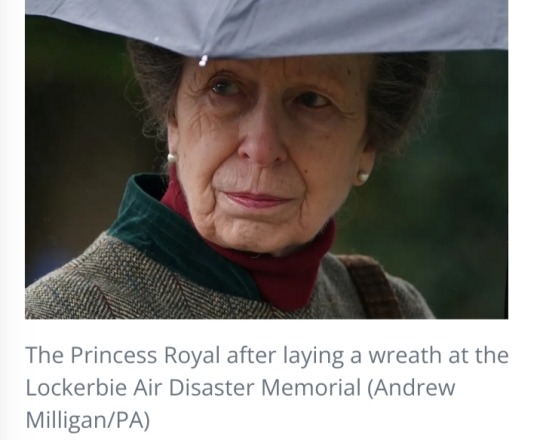
The Princess Royal has paid her respects to those who lost their lives in the Lockerbie bombing, which happened 35 years ago.
On 21 December 1988, a bomb exploded on Pan Am Flight 103 from Frankfurt to Detroit as it flew above the Dumfries and Galloway town, killing all 259 passengers and crew onboard.
A further 11 people died on the ground as parts of the wreckage landed on homes in the town.
Princess Anne visited Dryfesdale cemetery and the visitor centre on the town’s outskirts to remember those who lost their lives to the bombing.
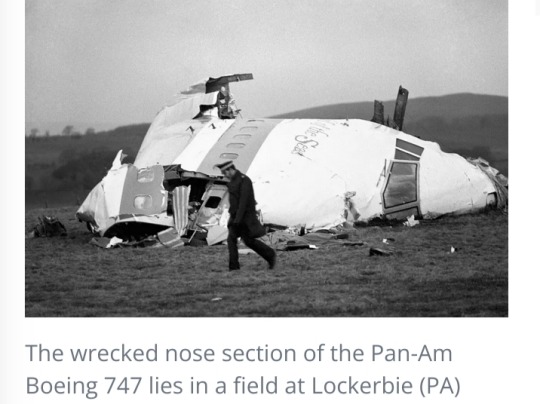
She met officials from Dumfries and Galloway Council, as well as others involved in keeping the memory of those who lost their lives alive.
She was joined by Fiona Armstrong, Lord Lieutenant of Dumfries.
Ms Armstrong, also a newsreader and reporter, covered the bombing while working as a journalist.
The princess was shown around the visitor centre and spoke those in attendance.
She signed the visitor guestbook and unveiled a small plaque created in honour of her visit to the site.
Shortly afterwards, she walked through the graveyard to the official memorial for those who were killed as a result of the bombing, where she laid a special wreath signed by her in commemoration of the dead.
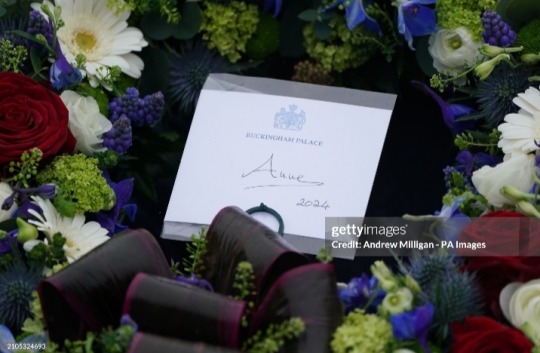
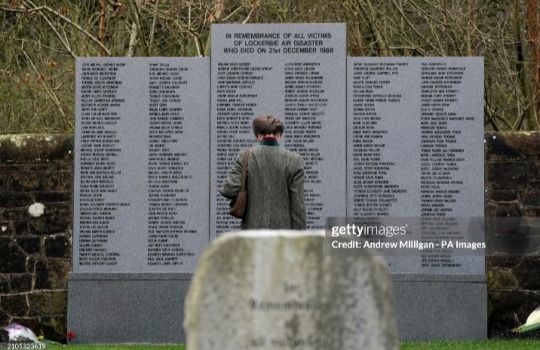
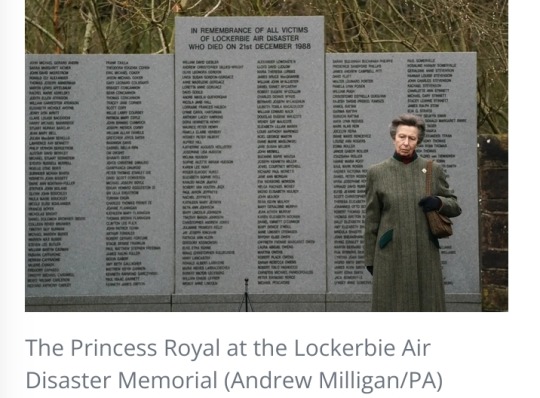
Ahead of laying the wreath, Ms Armstrong said:
“I was there on that night and I saw first-hand how this town rallied, how it copes and has continued to cope over the decades.
You could never be more proud of a community. A disaster like this can never be forgotten.
So much grief, such senseless losses, 270 innocent lives, remembered here on this memorial, each and every name will never be forgotten.
Lockerbie’s moto is forward, and we move together in hope.
Your Royal Highness, your brother, now the King, came here following the disaster.
Your mother, the late Queen; your father, the Duke of Edinburgh; also came here some years after to pay their respects.
And how we are honoured to have you here today, as the Princess Royal, but we also ask you to lay a wreath, please, of remembrance.”
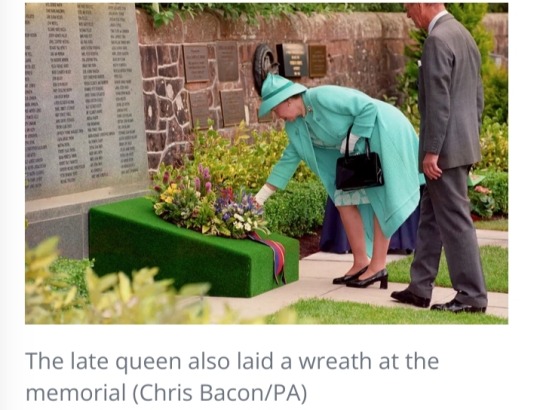
Former Libyan intelligence officer, Abdelbaset al-Megrahi, remains the only person to have been convicted following the atrocity.
He was found guilty of 270 counts of murder by a panel of three Scottish judges, sitting at a special court in the Hague in 2001 and was imprisoned in Scotland.
He was granted compassionate release in 2009 after being diagnosed with terminal cancer and returned to Libya where he died in 2012.
Libyan Abu Agila Masud is alleged to have helped make the bomb.
He is to go on trial in the US in May 2025 facing three charges which he denies.
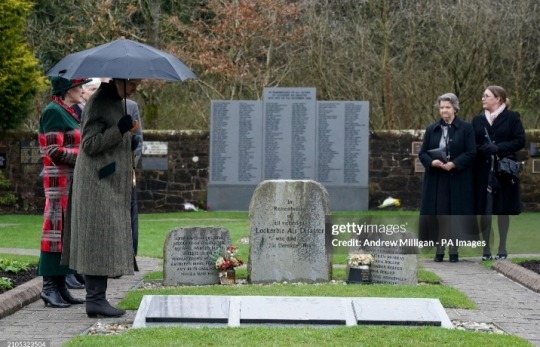
#Princess Anne#Princess Royal#British Royal Family#Lockerbie Air Disaster Memorial#Pan Am Flight 103#Dumfries and Galloway Council
44 notes
·
View notes
Text
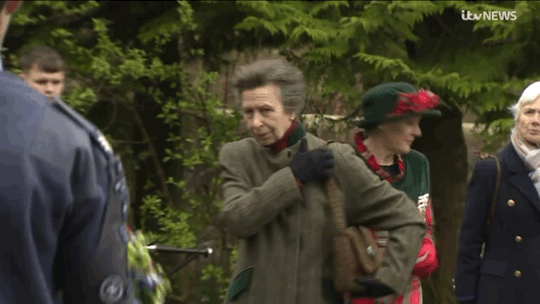
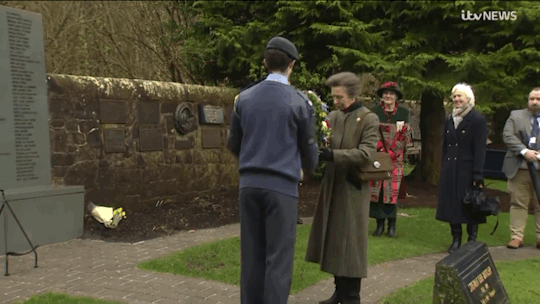
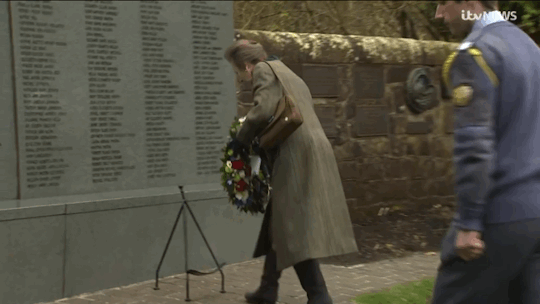
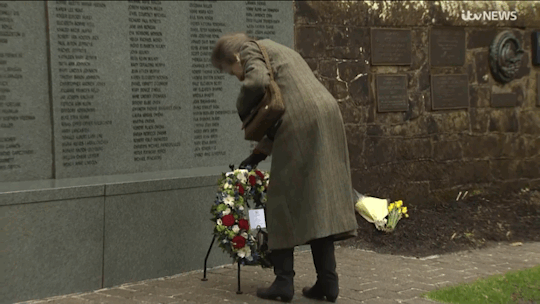

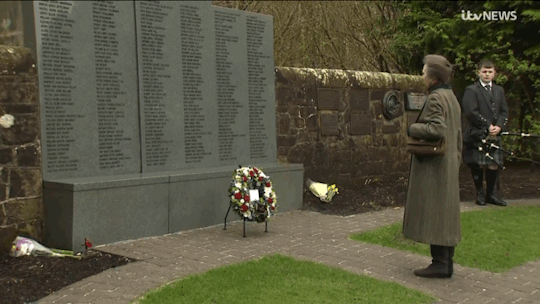
Princess Anne laying a wreath at the Lockerbie Air Disaster Memorial in the Lockerbie Garden of Remembrance in Dumfries on 25 March 2024
#may they rest in peace#princess anne#princess royal#anne does stuff#workanne 9 to 5#british royal family#brf
62 notes
·
View notes
Text


On this day in 1988, 259 passengers and crew and 11 townsfolk died when Pan Am flight 103 was blown up over Lockerbie.
On December 21, 1988, Flight 103 was en route from Frankfurt, Germany to New York via London's Heathrow Airport. At 7:02 p.m., 27 minutes after leaving London, the plane exploded, raining fragments on the city of Lockerbie. Eleven of the 270 dead were on the ground. The 259 passengers and crew included citizens of 21 countries. Among them were 190 Americans, including 15 active duty US military personnel and 10 IS veterans.
The pic shows The Lockerbie Memorial Cairn in Arlington National Cemetery, Virginia and was a gift from Scotland to the United States, in memory of those that died that fateful day.
The blocks of sandstone that comprise the cairn come from Corsehill Quarry near Annan, about eight miles southeast of Lockerbie and below the flight path of Flight 103. . Stones were sourced from Corsehill Quarry in Annan,. (Corsehill is the same quarry that provided the blocks used to build the base of the Statue Of Liberty.)
The following words are engraved on the cairn's base:
"On 21 December 1988, a terrorist bomb destroyed Pan American Airlines Flight 103 over Lockerbie, Scotland, killing all on board and 11 on the ground. The 270 Scottish stones which compose this memorial cairn commemorate those who lost their lives in this attack against America."
A bronze plaque on the side of the cairn reads,
"In remembrance of the two hundred seventy people killed in the terrorist bombing of Pan American Airways Flight 103 over Lockerbie, Scotland 21 December 1988. Presented by the Lockerbie Air Disaster Trust to the United States Of America."
The Lockerbie bombing remains one of the deadliest commercial airline attacks and is the deadliest terrorist attack ever in Scotland. Lockerbie: A Search For Truth, a drama based on the 2021 book The Lockerbie Bombing: A Father's Search for Justice by Jim Swire and Peter Biddulph is being aired on Sky and Peacock on January 2nd.
14 notes
·
View notes
Text
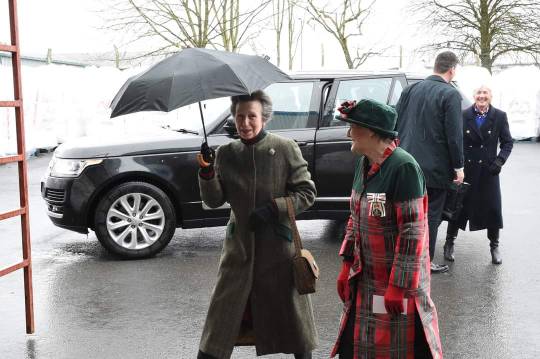
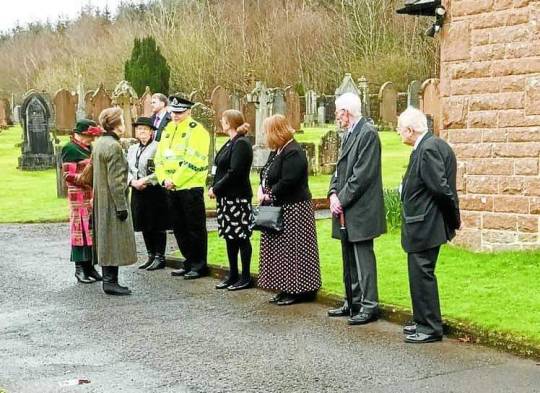


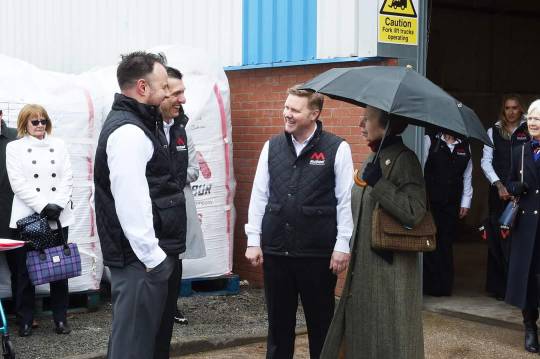

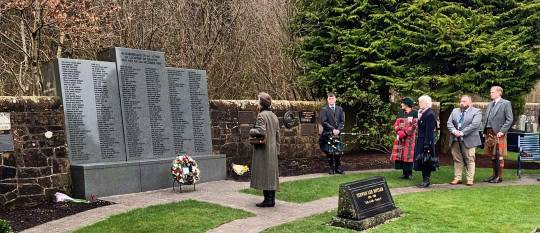
Princess Anne visiting Lockerbie. She toured plastic roads firm MacRebur first then went on to the Dryfesdale Lodge Visitor Centre and laid a wreath at the Pan Am 103 air disaster memorial, on 25 March 2024.
© Annandale Harald and Moffat News
44 notes
·
View notes
Text
Court Circular | 25th March 2024
St James’s Palace
The Princess Royal this afternoon visited MacRebur Limited, Unit 3 Broomhouses Industrial Estate, Lockerbie, and was received by His Majesty’s Lord-Lieutenant of Dumfries (Ms Fiona Armstrong).
Her Royal Highness later visited the Lockerbie Air Disaster Memorial at Lockerbie Garden of Remembrance, Dryfesdale Cemetery, Lockerbie, and laid a wreath.
The Princess Royal, President, Scotch Chef’s Club, subsequently opened Browns Food Group’s new facilities at Kelloholm Industrial Estate, Greystone Avenue, Kelloholm, Sanquhar, and was received by Mr Gordon Dickie (Vice Lord-Lieutenant of Dumfries).
Her Royal Highness, Royal Patron, Friends of TS Queen Mary, this evening attended a Reception at the Hilton Glasgow, 1 William Street, Glasgow, and was received by His Majesty’s Lord-Lieutenant of the City of Glasgow (Councillor Jacqueline McLaren, the Rt Hon the Lord Provost).
11 notes
·
View notes
Link
Guidance: Contains images some may find distressing.
It is the whisky-making Scottish island, world famous for its peaty single malts and warm hospitality.
But the isle of Islay, in the Inner Hebrides, is now being recognised for an almost forgotten example of huge courage and humanity.
A hundred years ago, Islay was on the frontline in the battle at sea during World War One.The island coped with mass casualties from two major troopship disasters just eight months apart.

Between them, the sinkings of the SS Tuscania in February and HMS Otranto in October, claimed the lives of about 700 men in the last year of the war.
Both will be officially commemorated on Islay this week.
A century ago, the island was enduring considerable pain. It had already lost about 150 sons on the Western front, from a population of just 6,000. Every household grieved for someone killed in a far away field. And then the carnage of war came to them.
The Tuscania had almost completed its transatlantic voyage, carrying US troops, among a convoy of ships. As it turned into the north channel between Scotland and Ireland on 5 February 1918, danger lurked beneath the waves.
A German U-boat stalked the convoy, got the Tuscania in its sights and fired two torpedoes - one of which ripped a huge gash in its side. It was a fatal blow. The former luxury liner, converted for the war effort, would soon be on the seabed.
The Tuscania was carrying almost 2,500 US soldiers and British crew. Incredibly, most were rescued by the Royal Navy. But some of those who made it into lifeboats were not so lucky. They were swept towards the cliffs and rocks of Islay's Oa peninsula and shipwrecked for a second time.
Private Arthur Siplon was thrown into the sea when his lifeboat capsized.
"He thought he was going to die," his youngest son Bob told me.
"But at last he grabbed hold of a rock and when the sea receded he managed to hang on and climbed to the shore."
Private Siplon was rescued by one of two Islay farmers who risked their own lives pulling men to safety.
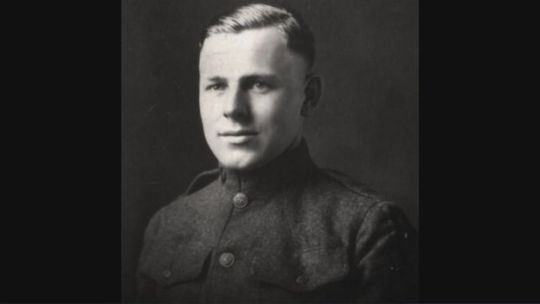
Pictured - Arthur Sipton
Robert Morrison and Duncan Campbell gave food and shelter to dozens of survivors and were later awarded the OBE.
Bob Siplon knows that he and his family would not exist if his father had not found help on Islay.
"It's like the actions of those people 100 years ago ripples through time to affect me 100 years later.
"It tells me that what we do makes a difference" he said.
This was a massive disaster for a small island to manage. In 1918, Islay had no electricity, no air service and few motor vehicles.

The funeral on Islay of 199 American soldiers who were victims of the Ontranto disaster
The civil authority on this almost crime-free island was a police sergeant on a bicycle, called Malcolm MacNeill. Sgt MacNeill and his three constables had to recover, identify and bury the remains of almost 200.
His grandson - former Nato secretary general, Lord Robertson - considers their task on a scale comparable with recent terrorist attacks.
"This is like Lockerbie (air disaster) or 7/7 or even 9/11 occurring in a small community.
"A huge event taking place with deaths, bodies, survivors - the calamity that was involved".
Despite their trauma, the islanders worked tirelessly to bury the dead with dignity.
They did not have an American flag for the funerals, so a small group of locals hand-stitched one from the materials they had - working late into the night.
That flag has been preserved by the Smithsonian Institution in Washington DC, which is sending it home on loan to Islay for the centenary.

The Smithsonian's Jennifer Jones is impressed by the care the islanders showed for the American soldiers washed up on their shores.
"It was very heartfelt, that people went out of their way to respect those who had recently lost their lives" she said.
Islanders pulled together to respond to the Tuscania sinking.
What they could not know is that this was only a preparation for a much bigger disaster to come.
Like the Tuscania, HMS Otranto was carrying US troops across the Atlantic in a convoy when disaster struck.
But it wasn't an act of war that sank the Otranto on 6 October 1918, within weeks of the armistice. It was a navigational error in a storm.
As the convoy approached the west coast of Scotland in near hurricane conditions, there was confusion over their exact position.
The Otranto was rammed by another ship in the convoy - HMS Kashmir - which ripped its steel hull wide open.
The Kashmir and the rest of the convoy sailed on, under orders not to give assistance for fear of U-boat attack.
Despite the ferocious weather, the Royal Navy destroyer, HMS Mounsey came to the rescue under the command of Lieutenant Francis Craven.
"In my viewpoint, Captain Craven was a real hero. Perhaps the real hero of the event" said Chuck Freedman, whose grandfather, Sam Levy, was on the Otranto.
Lieutenant Levy was among almost 600 soldiers who successfully jumped for their lives on to the deck of the Mounsey.

Funeral for the victims of the Ontranto at Kilchoman on Islay
Many others tried and failed and were crushed to death between the two ships. By the time the Mounsey left the scene there were still hundreds of men aboard the sinking Otranto.
Their best hope was to be swept towards one of the beaches on Islay's Atlantic coast. But that wasn't to be.

The Otranto was lifted by a huge wave and dumped down onto a reef that broke its back and tore the ship to pieces.
Only 21 men made it ashore alive.
Some were pulled from the sea by members of Donald-James McPhee's family.
They were shepherds and used their crooks to reach survivors - the length of their staffs, the distance between life and death.
But this was largely a recovery operation with bodies piling up along the coast.

"It must have been so sad for them to see that" said Mr McPhee.
"Waking up in the morning to a normal day's work and hundreds of dead bodies by the evening. It must have been horrendous."
Sergeant MacNeill painstakingly recorded the details of every body washed ashore, in a notebook which now has pride of place in the Museum of Islay life.
Many of the victims were from the US state of Georgia, which is planning its own commemorations later this year.
Some of the 700 victims of the Otranto and Tuscania disasters were never found.
The majority were buried on Islay.
After the war, the remains of the American soldiers were exhumed and returned home.
In 1918, the Tuscania disaster represented the biggest single loss of US military lives since the American civil war. The sinking of the Otranto accounted for some of America's heaviest losses at sea during the 1914-18 war. Yet the stories of these ships are not well known - lost perhaps in a century of Islay mist.
There is a large lighthouse-shaped memorial on Islay's bleak Mull of Oa.
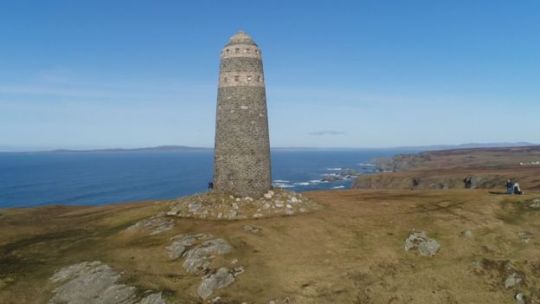
But when I was growing up on the island, the troopships were rarely talked about. That's changing. Today, every child at my old school - Bowmore primary - is learning about them.
On Friday 4 May, Princess Anne will lead commemorations on Islay to mark the centenary of these twin tragedies. These events will honour those who lost their lives and honour what the people of Islay did for those in peril on their shores a hundred years ago.
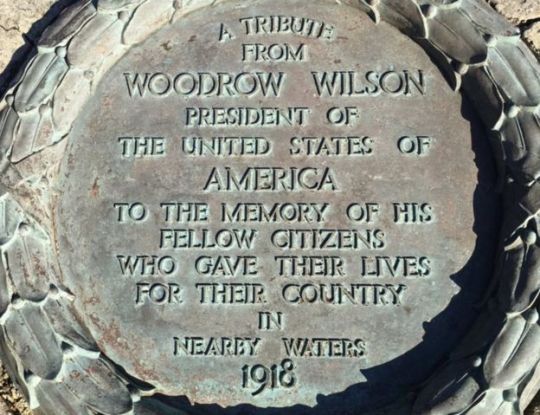
311 notes
·
View notes
Text
Pan Am Lockerbie bombing
Lockerbie disaster memorial (Lockerbie cemetery)
Pan Am Flight 103, also commonly referred to as the Lockerbie bombing, was the bombing of a Pan Am transatlantic flight from London Heathrow Airport to New York's John F. Kennedy International Airport on Wednesday, 21 December 1988. A Boeing 747–121, named Clipper Maid of the Seas, was destroyed by an explosive device killing all 243 passengers and 16 crew members.[2] Large sections of the plane crashed into Lockerbie, in southern Scotland, killing an additional 11 people on the ground.
Following a three-year joint investigation by Scottish police and the U.S. Federal Bureau of Investigation, murder warrants were issued for two Libyannationals in November 1991. Libyan leader Colonel Muammar Gaddafi eventually handed over the two men for trial at Camp Zeist, Netherlands in 1999 after protracted negotiations and UN sanctions. In 2001 Libyan intelligence officer, Abdelbaset al-Megrahi, was jailed for the bombing. In August 2009 he was released by the Scottish government on compassionate grounds after being diagnosed with prostate cancer. He died in May 2012 remaining the only person to be convicted for the attack.
In 2003 Gaddafi admitted Libya's responsibility for the Lockerbie bombing and paid compensation to the victims' families though he maintained he never personally gave the order for the attack.[3] During the Libyan civil war in 2011, a former government official contradicted Gaddafi claiming the Libyan leader had personally ordered the bombing.[3] Despite these assertions, numerous conspiracy theories have developed regarding responsibility for the destruction of Pan Am Flight 103.
Aircraft
The aircraft operating Pan Am Flight 103 was N739PA, a Boeing 747–121 named Clipper Maid of the Seas.[4] The jumbo jet was the fifteenth 747 built and was delivered in February 1970,[5][6] one month after the first 747 entered service with Pan Am.[5][7] In 1988 it had undergone a complete overhaul.
The flight
The Clipper Maid of the Seas operated the transatlantic leg of Flight 103, which had originated in Frankfurt, West Germany, on a Boeing 727. At London Heathrow, passengers and their luggage on the feeder flight transferred directly onto the Boeing 747, along with interline luggage not accompanied by anyone. The aircraft lifted off at 18:25 en route for JFK.
Contact is lost
The Clipper Maid of the Seas' "squawk" then flickered off. Air Traffic Control tried to make contact with the flight, with no response. Where there should have been one radar echo on screen, there were five, fanning out.[8][9] Comparison of the cockpit voice recorder to the radar returns showed that, eight seconds after the explosion, the wreckage had a 1-nautical-mile (1.9 km) spread.[10] A British Airways pilot, flying the Glasgow–London shuttle nearCarlisle, called Scottish authorities to report that he could see a huge fire on the ground; ATC screens were now full of returns moving eastward with the wind.[11]
Disintegration of aircraft
The explosion punched a 20-inch (0.51 m)-wide hole on the left side of the fuselage, almost directly under the "P" in the "Pan Am" logo. Investigators from the U.S. Federal Aviation Administration (FAA) concluded that no emergency procedures had been started in the cockpit.[12] Investigators from the Air Accidents Investigation Branch (AAIB) of the British Department for Transport concluded that the nose of the aircraft separated from the main section within three seconds of the explosion.[13]
The cockpit voice recorder, located in the tail section of the aircraft, was found in a field by police searchers within 24 hours. There was no evidence of a distress signal; a 180-millisecond hissing noise could be heard as the explosion destroyed the aircraft's communications centre.[14] Although the explosion was in the aircraft hold, the effect was magnified by the large difference in pressure between the aircraft's interior and exterior. Shock waves compounded as they traveled throughout the aircraft, knocking out the power.
Fuselage impact
The fuselage continued moving forward and down until it reached 19,000 ft (5,800 m), at which point its dive became nearly vertical.[15]
As it descended, the fuselage broke into smaller pieces, with the section attached to the wings landing first (46.5 seconds after the explosion)[16] in Sherwood Crescent, Lockerbie, where the 200,000 lb (91,000 kg) of kerosene contained inside ignited. The resultant fireball destroyed several houses.
Investigators were able to determine that both wings had landed in the crater after counting the number of large steel flap drive jackscrews that were later found there[9][page needed]; there was no evidence of the wings found outside the crater itself.[17] The British Geological Survey at nearby Eskdalemuir registered a seismic event measuring 1.6 on the Richter scale, which was attributed to the impact.
Another section of the fuselage landed about one half-mile northeast, where it slammed into a home in Park Place. The house was demolished, but the householder escaped.
Trial, appeals and release
Main article: Pan Am Flight 103 bombing trial
On 3 May 2000, the trial of Abdelbaset al-Megrahi and Lamin Khalifah Fhimah began. Megrahi was convicted of murder on 31 January 2001, and was sentenced to life imprisonment in Scotland; his co-defendant, Fhimah, was found not guilty.,[62]
The Lockerbie judgment stated: "From the evidence which we have discussed so far, we are satisfied that it has been proved that the primary suitcase containing the explosive device was dispatched from Malta, passed through Frankfurt and was loaded onto PA103 at Heathrow. It is, as we have said, clear that, with one exception the clothing in the primary suitcase was the clothing purchased in Mr Gauci’s shop on 7 December 1988. The purchaser was, on Mr Gauci’s evidence, a Libyan. The trigger for the explosion was an MST-13 timer of the single solder mask variety. A substantial quantity of such timers had been supplied to Libya. We cannot say that it is impossible that the clothing might have been taken from Malta, united somewhere with a timer from some source other than Libya and introduced into the airline baggage system at Frankfurt or Heathrow. When, however, the evidence regarding the clothing, the purchaser and the timer is taken with the evidence that an unaccompanied bag was taken from KM180 to PA103A, the inference that that was the primary suitcase becomes, in our view, irresistible. As we have also said, the absence of an explanation as to how the suitcase was taken into the system at Luqa is a major difficulty for the Crown case, but after taking full account of that difficulty, we remain of the view that the primary suitcase began its journey at Luqa. The clear inference which we draw from this evidence is that the conception, planning and execution of the plot which led to the planting of the explosive device was of Libyan origin. While no doubt organisations such as the PFLP-GC and the PPSF were also engaged in terrorist activities during the same period, we are satisfied that there was no evidence from which we could infer that they were involved in this particular act of terrorism, and the evidence relating to their activities does not create a reasonable doubt in our minds about the Libyan origin of this crime."[63]
Appeal
The defence team had 14 days in which to appeal against Megrahi's conviction, and an additional six weeks to submit the full grounds of the appeal. These were considered by a judge sitting in private who decided to grant Megrahi leave to appeal. The only basis for an appeal under Scot law is that there has been a "miscarriage of justice," which is not defined in statute and so it is for the appeal court to determine the meaning of these words in each case.[64] Because three judges and one alternate judge had presided over the trial, five judges were required to preside over theCourt of Criminal Appeal:
#Scottish government#Scotland#Pan Am Flight 103#Muammar Gaddafi#London Heathrow Airport#Lockerbie#Libya#Abdelbaset al-Megrahi
0 notes
Link
On the 30th anniversary of the Lockerbie Air Disaster today, Holy Trinity RC Church, Lockerbie was open from 10am to allow visitors to call in for quiet reflection, to light a memorial candle or to have a chat and a cup of tea. The day ended with the celebration of Holy Mass at 7pm led ...
0 notes
Photo

In memory of the victims of the Lockerbie Air Disaster over Scotland 1988- taps and love from Canada
0 notes
Link
Image copyright Gordon Austin Griffin
Image caption The aircraft crashed in open land on the edge of Stockport town centre
Fifty years ago a plane returning from Majorca plunged to the ground in Stockport, Greater Manchester, killing 72 people. Here survivors and eyewitnesses recall what remains one of Britain’s worst, but lesser-known, air disasters.
The British Midland flight was full of returning holidaymakers bound for Manchester Airport when, on the morning of 4 June 1967, it suddenly lost power and began to fall.
Terrified residents watched the aircraft hurtling across rooftops, so low they could see people inside, banging on the windows.
Moments later it crashed on a small patch of open ground at Hopes Carr, on the edge of the town centre, striking a garage building and lighting up in a ball of fire.
Of its 84 passengers and crew, 72 died and the remaining 12 were seriously injured. They included a stewardess and the captain.
“We were met with a scene of sheer horror,” said retired Stockport firefighter Mike Phillips, who was 21 at the time.
Image copyright Gordon Austin Griffin
Image caption The cause of the crash was found to be a problem with the aircraft’s fuel lines
“There were bodies all over the place, and body parts. Members of the public were just screaming for us to do something.”
The aircraft had narrowly avoided hitting rows of nearby houses, averting an even greater disaster. Incredibly, no-one on the ground was hurt.
“There was this thick black smoke,” Mr Phillips said. “Hundreds of people arrived. I always say the real heroes are the civilians who got stuck in and were a real help to us.
“I saw the body of a young boy, and he just looked like there was nothing wrong with him. That stayed with me.”
An air accident investigation found the cause of the crash to be “fuel starvation” due to a fault in the fuel lines and the Canadair C-4 Argonaut propeller aircraft’s poor warning system.
It is still considered one of the worst air disasters in British aviation history, alongside Lockerbie in 1988 and Staines 16 years earlier.
Image copyright Pathe
Image caption There is evidence to suggest the pilot made efforts to steer the aircraft away from homes
Captain Harry Marlow was not blamed, and there were strong indications he made concerted efforts to steer the aircraft away from people’s homes.
The former RAF display pilot suffered amnesia and never flew again. He died in 2009.
Survivor Harold Wood was 15 at the time of the crash.
Remembering the flight’s final moments, he said: “We were banking quite steeply and I could see a gentleman coming out of a shop and getting into his little Anglia van and looking up at the aircraft. We were that low that I could really at that time tell you the registration.
“I thought to myself at this point ‘we aren’t going to make this’.
“And at this point this is where I can’t remember a thing about the actual flight other than actually waking up in the aircraft itself, surrounded by flames and my brother next to me.
“I saw a hole in the side of the aircraft so I thought, right, let’s get out of here.”
Mr Wood’s brother, Bill, also survived but his father did not.
Image caption A plaque was placed at the scene of the crash in memory of the victims
Vivienne Thornber, who was 19 and travelling with friend, Susan Howarth, remembers the plane plunging “as low as the bedroom windows”.
The pair later escaped the smouldering wreckage with the help of policemen.
She said: “There was no mention of ‘fasten your seatbelts’ or anything like that. We were not informed that there was anything wrong and we hadn’t realised until we knew that we were too low to go anywhere.
“I woke up after the impact and saw the cabin door swinging backwards and forwards.
“There were flames and I thought ‘come on Vivienne, do something or else you are going to get burned alive here.”
Image copyright Pathe
Image caption Emergency services were helped by many members of the public during the rescue effort
Charles Hunt, now aged 95, was a police inspector placed in charge of a makeshift mortuary. He had the upsetting task of dealing with the dead.
“Casualties had been brought in,” he said. “They were all dead of course. There were 32 in there.
“The only two that could be identified were a little girl of about six, with hardly a mark on her body, and the co-pilot had a head injury. The rest were all burned beyond recognition.
“It was upsetting to see all the passengers’ belongings. They had just been on holiday, and this was the end of it.”
Image copyright Pathe
Image caption Another view of the wreckage shows just how close the crash came to buildings in the town
A service will be held on Sunday at the site of the crash, where two memorials stand in tribute to the victims and the rescuers.
An hour-long documentary has also been made to mark 50 years since the disaster. Six Miles from Home will be shown shown at the Stockport Plaza on 10 June, from 19:30 BST.
Aviation expert Ian Barrie, who produced the film with Roger Boden, said: “I was four years old at the time, and Roger was a boy who cycled to the scene on his bike.
“While we all grew up knowing about the plane crash, it seems to often be forgotten.
“What emerged very quickly was what a human story it was. People were sitting in their kitchens making a slice of toast, there was a huge boom, they looked outside and it was an air liner.
“It’s just hard to comprehend.”
Image copyright Argonaut Productions
Image caption An hour-long documentary has been made to mark the anniversary of the disaster
Though the flight ended in such horror, some survivors said one thing that impressed them was the response from the people of Stockport.
Ms Thornber said the messages she received while battling severe injuries were “wonderful and very, very moving”.
“When I was in hospital there were a lot of letters written to me most of whom I have to say I’ve no idea who they were, just normal people wishing me all the best.
“The kind people at Stockport Infirmary forwarded more letters. It was just marvellous that people would even think of doing that for somebody they’d never even met.”
Read more: http://ift.tt/2sC72O7
The post Stockport air disaster: The holiday flight that ended in catastrophe – BBC News appeared first on MavWrek Marketing by Jason
http://ift.tt/2rSISCK
0 notes
Text
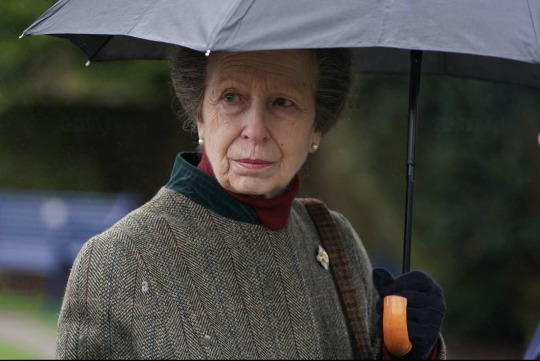
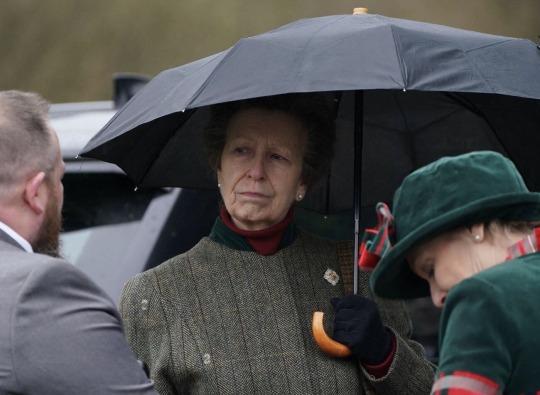
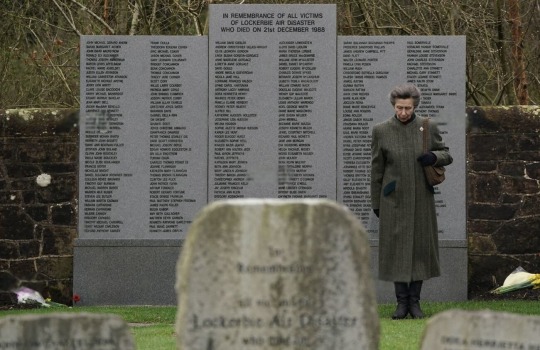
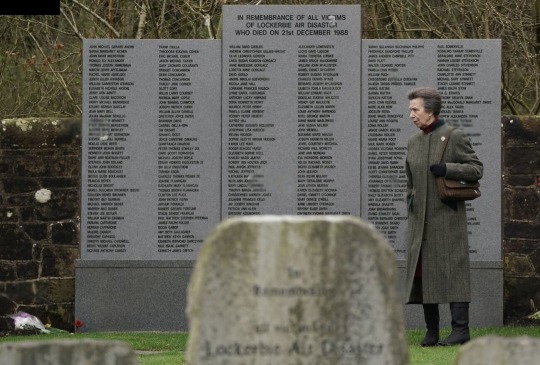
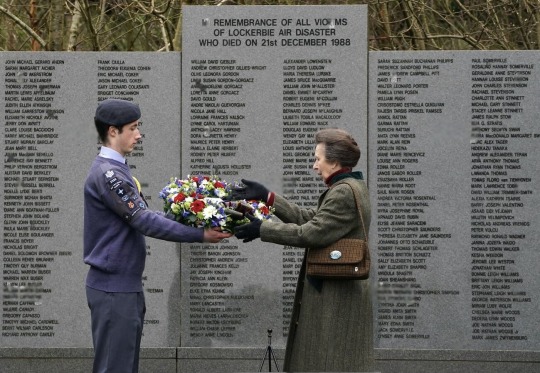
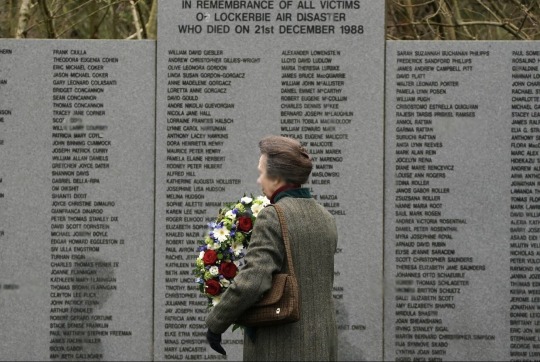
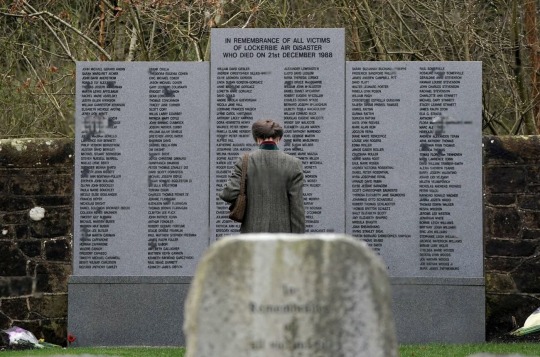
Princess Anne laying a wreath at the Lockerbie Air Disaster Memorial in the Lockerbie Garden of Remembrance in Dumfries on 25 March 2024
57 notes
·
View notes
Text
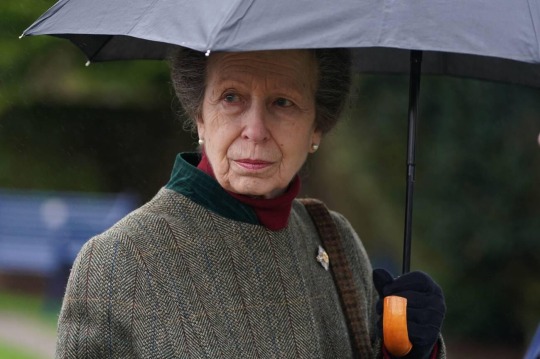


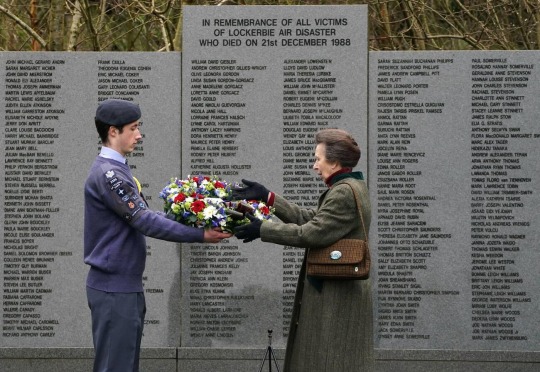
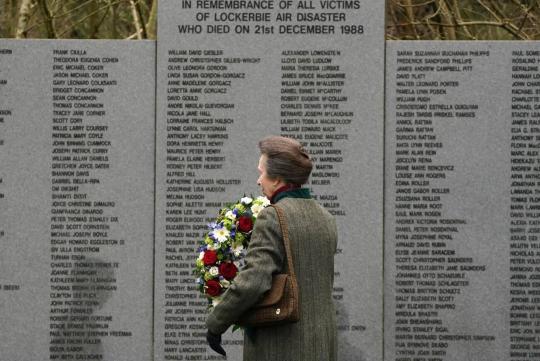
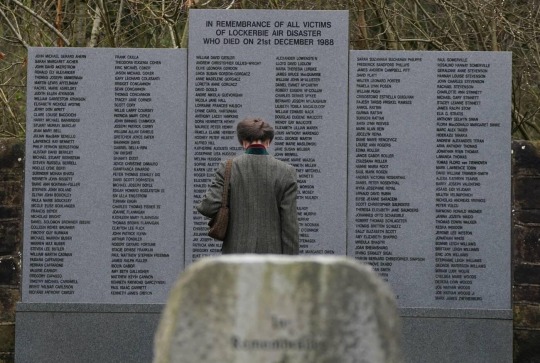
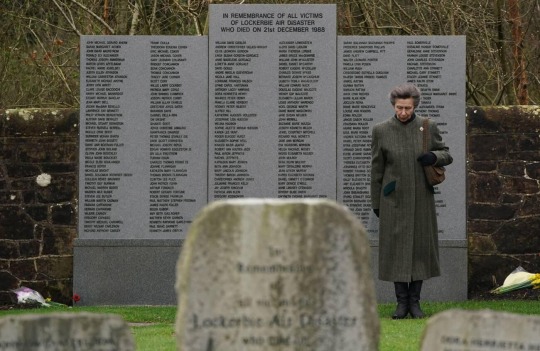
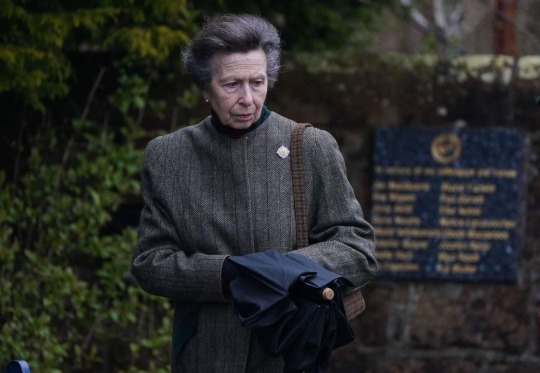
Princess Anne at the Lockerbie Air Disaster Memorial in the Lockerbie Garden of Remembrance, on 25 March 2024.
31 notes
·
View notes
Text


Princess Anne visiting the Lockerbie Air Disaster Memorial at the Dockerbie Garden of Remembrance, on 25 March 2024.
37 notes
·
View notes
Photo




On this day in 1988, 259 passengers and crew and 11 townsfolk died when Pan Am flight 103 was blown up over Lockerbie……
On December 21, 1988, Flight 103 was en route from Frankfurt, Germany to New York via London's Heathrow Airport. At 7:02 p.m., 27 minutes after leaving London, the plane exploded, raining fragments on the city of Lockerbie. Eleven of the 270 dead were on the ground. The 259 passengers and crew included citizens of 21 countries. Among them were 190 Americans, including 15 active duty US military personnel and 10 IS veterans.
The pic shows The Lockerbie Memorial Cairn in Arlington National Cemetery, Virginia and was a gift from Scotland to the United States, in memory of those that died that fateful day.
The blocks of sandstone that comprise the cairn come from Corsehill Quarry near Annan, about eight miles southeast of Lockerbie and below the flight path of Flight 103. Corsehill Quarry, operating since 1820, has provided stones for many buildings in the United States, most notably the base of the Statue of Liberty.
The following words are engraved on the cairn's base:
"On 21 December 1988, a terrorist bomb destroyed Pan American Airlines Flight 103 over Lockerbie, Scotland, killing all on board and 11 on the ground. The 270 Scottish stones which compose this memorial cairn commemorate those who lost their lives in this attack against America."
A bronze plaque on the side of the cairn reads,
"In remembrance of the two hundred seventy people killed in the terrorist bombing of Pan American Airways Flight 103 over Lockerbie, Scotland 21 December 1988. Presented by the Lockerbie Air Disaster Trust to the United States Of America."
85 notes
·
View notes